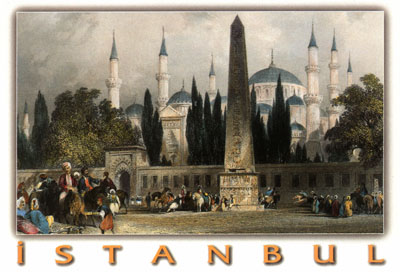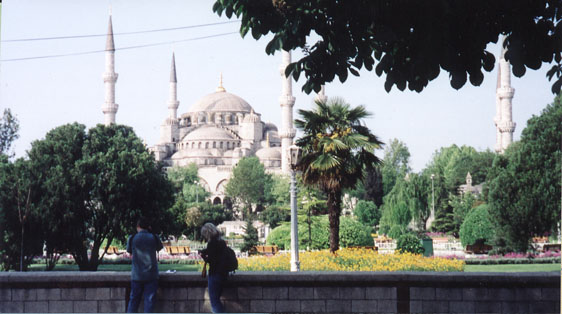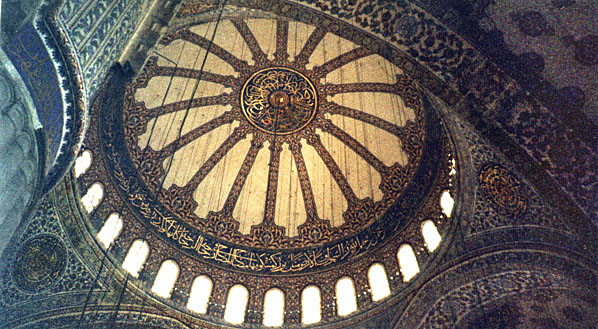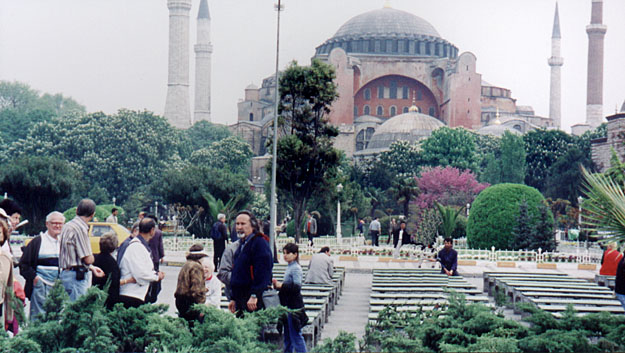

The core of Istanbul is the old Constantinople, which was one of the glories of the Western world, and was the capital of the Byzantine Empire, until the Ottoman Turks captured it in 1452. It has a fascinating blend of the old and the new. The picture, taken from a postcard, shows an impression of the Blue Mosque, dating from the mid-16th century, with an obelisk from 1st century Egypt in the foreground. Near the Blue Mosque is the Hagia Sofia, built by Justinian as a church in the 6th century, and which the Blue Mosque was built to emulate and surpass. Not far away is a street where the shops specialize in selling satellite dishes.

This is what the Blue Mosque looks like today, seen from the plaza outside the Hagia Sofia.

Inside the great Dome of the Blue Mosque in Istanbul. The Blue Mosque was built around 1550 as a deliberate attempt to be bigger and better than the (then) 1000-year old Hagia Sofia. In my view, it succeeds in being breathtaking when one first enters it, but it has little of the spritual quality of the Hagia Sofia, which is a much more impressive building when you are in it

 |
Hagia SofiaInside the Hagia Sofia in Istanbul: the "chair" in which the leader of the prayers may sit. At the top right of the picture, one can see a gallery. It is in the area that was reserved as a Christian church within the mosque (compare the great mosque in Cordoba, Spain, into which a synagogue was built). That gallery extends all round the main floor, and is the level where women had to go to pray when the Hagia Sofia was a mosque. Kemal Ataturk ended its identity as a mosque, and turned it into a museum, which it remains. . On the last day of our holiday, I was lucky enough to be in the Hagia Sofia alone with one other person before the tourist busloads entered the building, and that is a very spiritual experience. |